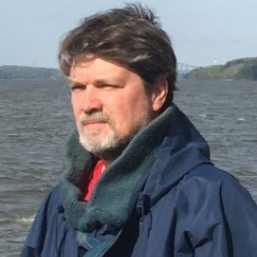Fate of Metals Released from Wastewater Effluents
A special issue of Toxics (ISSN 2305-6304). This special issue belongs to the section "Metals and Radioactive Substances".
Deadline for manuscript submissions: closed (31 October 2022) | Viewed by 13474
Special Issue Editor
Interests: fate and exposure of metals in wastewaters
Special Issues, Collections and Topics in MDPI journals
Special Issue Information
Dear Colleagues,
Wastewaters, including municipal and mining effluents, represent large sources of metals released to the aquatic environment. Metals are significantly present in municipal effluents, and a number of relatively small industrial plants release metals directly into municipal sewer systems. Mining activities are well-recognized sources of metals to the aquatic environment when they are leached from recent and historical tailings. Acid mine drainage is an issue for the mining industry worldwide. Emerging metal uses, such as the growing production of engineered metal-based nanomaterials and technology-critical elements, may represent additional metal sources, following their transformation, to the environment where their environmental risk remains to be assessed.
Predicting the environmental impact of the metals contained in those effluent discharges requires an understanding of how their physical and chemical characteristics, and those of the effluent receiving waters, affect metal uptake by aquatic organisms and metal toxicity. As the biological availability of metals is influenced by their speciation, chemical associations of metals are key to assessing the mobility and equilibrium of metal forms. Methods to predict metal bioavailability and toxicity are either by direct measurement such as in electrochemistry and chromatography or using models such as MINEQL or WHAM. These models are based on chemical equilibrium constants to predict how water chemistry modifies forms of the metal and how its toxicity changes, and their results are often validated by controlled exposure experiments using testing animals.
Dr. Christian Gagnon
Guest Editor
Manuscript Submission Information
Manuscripts should be submitted online at www.mdpi.com by registering and logging in to this website. Once you are registered, click here to go to the submission form. Manuscripts can be submitted until the deadline. All submissions that pass pre-check are peer-reviewed. Accepted papers will be published continuously in the journal (as soon as accepted) and will be listed together on the special issue website. Research articles, review articles as well as short communications are invited. For planned papers, a title and short abstract (about 100 words) can be sent to the Editorial Office for announcement on this website.
Submitted manuscripts should not have been published previously, nor be under consideration for publication elsewhere (except conference proceedings papers). All manuscripts are thoroughly refereed through a single-blind peer-review process. A guide for authors and other relevant information for submission of manuscripts is available on the Instructions for Authors page. Toxics is an international peer-reviewed open access monthly journal published by MDPI.
Please visit the Instructions for Authors page before submitting a manuscript. The Article Processing Charge (APC) for publication in this open access journal is 2600 CHF (Swiss Francs). Submitted papers should be well formatted and use good English. Authors may use MDPI's English editing service prior to publication or during author revisions.
Keywords
- wastewater
- bioavailability
- metals
- sediment
- fate
- speciation
- mine tailings
- transformation
Benefits of Publishing in a Special Issue
- Ease of navigation: Grouping papers by topic helps scholars navigate broad scope journals more efficiently.
- Greater discoverability: Special Issues support the reach and impact of scientific research. Articles in Special Issues are more discoverable and cited more frequently.
- Expansion of research network: Special Issues facilitate connections among authors, fostering scientific collaborations.
- External promotion: Articles in Special Issues are often promoted through the journal's social media, increasing their visibility.
- e-Book format: Special Issues with more than 10 articles can be published as dedicated e-books, ensuring wide and rapid dissemination.
Further information on MDPI's Special Issue polices can be found here.






